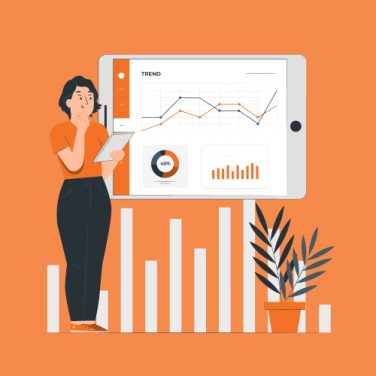Employee onboarding marks the critical transition from candidate to fully engaged team member and encompasses all activities designed to integrate new hires into an organisation’s culture, processes, and expectations.
As part of the broader employee lifecycle management, onboarding plays a foundational role in shaping an employee’s journey. When executed effectively, it boosts early-stage motivation, accelerates time-to-productivity, and lays the groundwork for employee retention and long-term satisfaction.
Why onboarding matters
- Defines role clarity: Structured orientation and role-overview sessions help new hires understand responsibilities and performance expectations.
- Drives engagement: Positive first impressions foster emotional commitment and reduce early turnover.
- Accelerates productivity: Clear processes, system access, and well-defined learning paths shorten time-to-productivity.
- Promotes culture adoption: Immersion in mission and values ensures alignment with company goals and norms.
- Reduces turnover costs: Effective onboarding can reduce first-year turnover by up to 50%, saving recruitment and training investments.
Preboarding: Setting the stage for success
Preboarding bridges the gap between offer acceptance and day one, converting candidate excitement into meaningful engagement.
By initiating structured preboarding activities, organisations can ensure new hires arrive equipped, informed, and enthusiastic about their role.
Organisations should implement the following preboarding best practices:
| Activity | Description | Tools/Resources |
|---|---|---|
| Welcome Package | Digital handbook, company swag, role-specific guides | Employee Self-Service portal, MiHCM Onboarding module |
| Document Collection | E-signature for contracts, tax forms, policy acknowledgments | Integrated E-signature workflows, HR Analytics |
| Team Introductions | Scheduled virtual meet-and-greets with key stakeholders | Calendar invites, video conferencing |
| Preboarding Checklist | Step-by-step task list: create IT accounts, complete assessments | Mobile reminders, Employee Self-Service |
| Learning Materials | Access to relevant online courses and quick-start guides | Learning Management System, MiHCM AI-driven recommendations |
By leveraging digital portals and automated reminders, HR teams can reduce administrative load and provide new hires with a clear roadmap from day one. Scheduling meet-and-greet calls ensures social connection before arrival, reinforcing a sense of belonging from the outset.
Crafting first-day experiences
The first day sets the tone for the entire employment relationship.
A well-structured agenda, combined with social integration and real-time feedback, ensures new hires feel supported and confident in their new role.
First-day agenda best practices:
- Orientation session: Company overview, culture presentation, and housekeeping details.
- Role overview: Manager-led deep dive into responsibilities, goals, and performance metrics.
- System access: IT provisioning, software walkthroughs, and login verifications.
- Peer buddy assignment: Connection with an experienced colleague for questions and social support.
- Interactive icebreakers: Team-building exercises to foster connections and ease nerves.
- Workspace setup: Preconfigured equipment, badge access, and ergonomic checks.
- End-of-day feedback: Quick survey or check-in to capture first impressions and address concerns.
Incorporating these elements ensures a balanced mix of information delivery, hands-on practice, and interpersonal bonding. Real-time feedback helps HR refine first-day processes, addressing any emerging gaps immediately.
Integration into company culture
Cultural integration transforms new hires from observers into active contributors. By immersing employees in mission-driven activities and facilitating cross-functional interactions, organisations cultivate a sense of ownership and belonging.
Building cultural fluency:
- Mission & Values workshop: Facilitate interactive sessions where hires discuss how their role aligns with organisational purpose.
- Cultural artifacts: Share stories, videos, and success timelines that illustrate core values in action.
- Cross-functional meetups: Organised coffee chats or roundtables with peers from different departments.
- Employee resource groups: Encourage early participation in social or interest-based communities.
- 30-60-90 day check-ins: Structured touchpoints to gauge cultural adjustment and gather feedback.
Integrating cultural elements into formal onboarding ensures new hires adopt company norms and contribute authentically. Scheduled check-ins at 30, 60, and 90 days help monitor adaptation and highlight areas for additional support.
Leveraging technology and self-service in onboarding
Modern onboarding hinges on streamlined workflows and empowering new hires through technology.
MiHCM’s integrated suite offers seamless modules that automate administrative tasks and enhance engagement.
Tech stack for modern onboarding:
- Sistem Manajemen Talenta & Orientasi: Automates paperwork, approvals, and trackable checklists.
- Employee Self-Service: Mobile access to tasks, documents, and company resources.
- Seamless recruitment process: Unified ATS and onboarding platform for smoother handoffs.
- MiA digital assistant: Instant answers to FAQs and guided process support.
- Automated workflows: Preconfigured HR and IT provisioning for system access.
By simplifying tasks with integrated modules, HR teams free up time for strategic initiatives.
Mobile self-service capabilities increase engagement, as new hires can complete onboarding steps on their schedule.
AI-driven support from MiA reduces administrative queries by up to 30%, while embedded HR Analytics track completion and highlight bottlenecks.
Measuring success: Key onboarding metrics
Data-driven onboarding transforms subjective impressions into actionable insights. Key metrics help HR teams identify strengths and areas for improvement across the process.
Onboarding dashboard metrics
| Metric | Definition | Benchmark |
|---|---|---|
| Completion Rate | Percentage of onboarding tasks finished by day 7 | > 90% |
| Time-to-Productivity | Days until new hire meets defined performance targets | < 30 days |
| 90-Day Retention | Percentage of hires remaining after 90 days | > 85% |
| Survey Engagement | Response rate to onboarding satisfaction surveys | > 70% |
| Buddy Programme Satisfaction | Average rating of mentor programme | > 4/5 |
| Document Turnaround Time | Average time to complete HR paperwork | < 48 hours |
Setting quarterly benchmarks and monitoring trends enables continuous improvement. Leveraging HR Analytics uncovers process inefficiencies—such as low survey engagement or delayed provisioning—and guides targeted remediation.
Ready to boost your onboarding?
Employee onboarding best practices—starting with preboarding, first-day planning, and cultural integration—form the backbone of a successful talent experience.
Continuous measurement through completion rates, time-to-productivity, and retention metrics ensures ongoing refinement.
Integrating an HR suite like MiHCM streamlines workflows, empowers new hires via mobile self-service, and provides the analytics needed to optimise every stage.
- Audit current process: Map existing workflows and identify gaps.
- Select key metrics: Prioritise metrics that align with business goals and benchmark against industry standards.
- Pilot new tools: Test integrated modules for document management, checklists, and AI assistance.
- Train stakeholders: Equip HR, IT, and managers with clear roles and responsibilities.
- Request a demo: Discover how MiHCM’s Talent Acquisition & Onboarding, Employee Self-Service, and HR Analytics can transform your onboarding.
Begin your journey to a more engaging, efficient onboarding experience. Request a demo of the MiHCM suite today to see how seamless integration and data-driven insights can elevate your new hire engagement and retention.



